Today’s Current Affairs
16th February 2023 Current Affairs are incorporated with the important news that made the current affairs headlines for banking, UPSC or other competitive exams. Daily Current Affairs is the complete bag of important news that is held all day long. One should have complete knowledge about banking terms, current affairs news, etc. So, here is the Top News of the Day for 16th February 2023 to help you prepare the Latest Current Affairs part. After reading this section, you can successfully attempt Current Affairs Quiz.
Here is the Current Affairs 16th February 2023 covering the following news headlines: Cheetah Reintroduction Program, Nikki Haley, David Malpass, BHIM-UPI transactions, Rolls-Royce, Exercise Tarkash.
National News
1. 12 Cheetahs to be Flown from South Africa Under Cheetah Reintroduction Program

Union Environment Minister Bhupender Yadav announced Twelve cheetahs will be flown in from South Africa on 18th February. Under the ambitious Cheetah reintroduction program, Prime Minister Narendra Modi released the first batch of eight spotted felines — five females and three males — from Namibia into a quarantine enclosure at the Kuno National Park in Madhya Pradesh on his 72nd birthday on September 17 last year.
2. Prime Minister Narendra Modi Inaugurated National Aadi Mahotsav
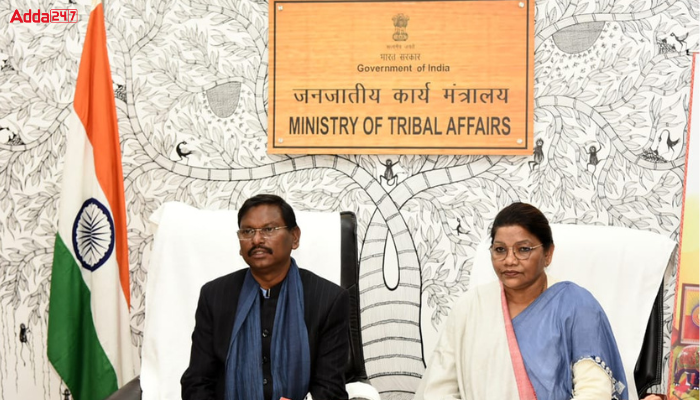
Prime Minister Narendra Modi inaugurated the National Aadi Mahotsav on 16th February 2023 at Major Dhyan Chand National Stadium, New Delhi. This was announced at a media briefing by the Union Minister of Tribal Affairs, Arjun Munda in New Delhi. Minister of State for Tribal Affairs, Renuka Saruta was also present on the occasion. Arjun Munda also informed that the Prime Minister will be given an overview of the products which will be on display at various stalls and will engage with the artisans and the craftsmen from the tribal communities.
International News
3. Nikki Haley- A Republican & An Indian-American formally launches her 2024 presidential bid

Indian-origin Republican leader Nikki Haley formally launched her 2024 presidential bid, casting herself as a younger, fresher alternative to her one-time boss and former US President Donald Trump. Haley, 51, is the two-term Governor of South Carolina and the former US Ambassador to the United Nations.
4. World Bank chief David Malpass to step down early

World Bank chief David Malpass has announced his resignation nearly a year early. He ending a tenure at the head of the development lender that was clouded by questions over his climate stance. The veteran of Republican administrations in the United States was appointed to the role in 2019 when Donald Trump was president and previously served as Under Secretary of the Treasury for international affairs. Malpass’s term would have originally ended in 2024.
Important takeaways for all competitive exams:
- World Bank Headquarters: Washington, D.C., United States;
- World Bank Founded: July 1944.
Banking News
5. Karnataka Bank awarded ‘Prathista Puraskar for achieving highest percentage in BHIM-UPI transactions
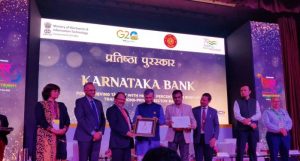
Karnataka Bank was awarded with ‘Prathista Puraskar’ under ‘Digidhan Awards 2021-22’ by Ministry of Electronics and Information Technology (MeitY), government of India for achieving target with highest percentage in BHIM-UPI transactions in private sector bank category. Labelled as ‘KBL-NxT’, the bank is currently undertaking an accelerated digital drive under its transformation journey ‘KBL VIKAAS 2.0’. This award is an ideal tribute to the founding fathers of this great institution as Karnataka Bank is stepping into its 100th year of its fruitful existence.”
Important takeaways for all competitive exams:
- Karnataka Bank Headquarters: Mangaluru;
- Karnataka Bank CEO: Mahabaleshwara M. S (15 Apr 2017–);
- Karnataka Bank Founded: 18 February 1924.
6. RBI Grants in-principle approval to 32 entities for Payment Aggregator licence
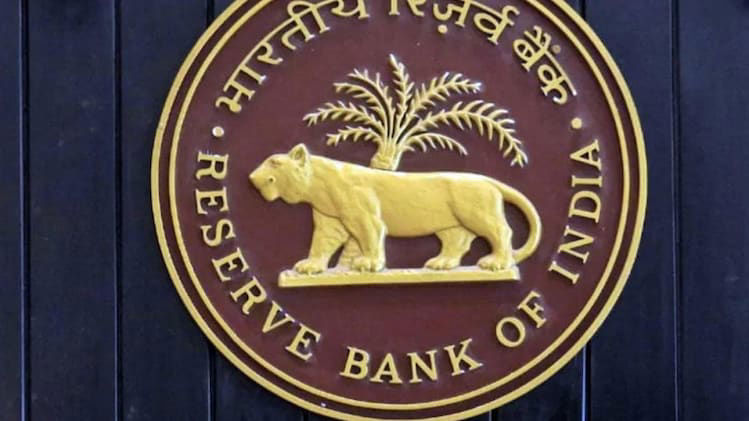
The RBI has granted a total of 32 in-principle authorisations to existing payment aggregators, to operate as online payment aggregators, according to a press statement issued by the central bank. RBI also granted a total of 19 new online PA authorisations to firms including Groww Pay Services, Juspay Technologies, Mswipe Technologies, Tata Payments, and Zoho Payment Tech.
Business News
7. Indian PSU refiners to set up 137,000 tonnes per annum green hydrogen facility by 2030

The public sector oil refineries in India are estimated to build green hydrogen capacity of 137,000 (1.37 lakh) tonnes per annum (TPA) by 2030. If fructified, besides boosting the economy with investments and jobs, this massive capacity building in the green hydrogen sector would reduce greenhouse gas emissions in a large way. Hydrogen, like electricity, is an energy carrier that must be produced from another substance. Hydrogen can be produced from a variety of sources including water, fossil fuels, or biomass and used as a source of energy or fuel.
8. Rolls-Royce Announced Order of Trent XWB-97 Engines from Air India

Rolls-Royce, a British engineering company, announced that it has received an order from Air India for 68 Trent XWB-97 engines, in addition to an option for 20 more. The large A350 aircraft of Airbus are powered by Rolls-Royce XWB engines. Air India sealed an order for procuring 250 Airbus passenger jets. The order comprises 40 Airbus A350s and 210 Airbus A320/321 aircraft. Separately, Air India ordered 220 planes from Boeing.
Defence News
9. India, US Forces Run Joint Exercise Tarkash

A joint counter-terrorism exercise Tarkash between National Security Guard (NSG) and US Special Operations Forces (SOF) culminated in Chennai, after four weeks of intense training and joint anti-terror exercises. The main highlight of the exercise was mock drills for the CBRN (Chemical, Biological, Radiological and Nuclear) counter terror response by special forces of both countries. The training regimen of the exercise included the conduct of urban counter-terrorism drills, combat shooting and practice of long-range marksmanship, to enhance mutual warfare capabilities. In the current geopolitical landscape, Exercise Tarkash is a significant one as India is surrounded by two nuclear-armed neighbours, China and Pakistan.
10. Aero India: Solar-powered drone SURAJ unveiled

Drone startup Garuda Aerospace has unveiled its solar-powered drone “SURAJ”, designed specifically for surveillance operations, at Aero India 2023. SURAJ is an ISR (intelligence, surveillance, reconnaissance) high-altitude drone designed specifically for surveillance operations, providing “real-time information to the high command and protecting jawans on the ground.” Principal Scientific Advisor to Defence Minister and former DRDO Chief Dr. Satheesh Reddy unveiled it. Recently, Garuda Aerospace had raised USD 22 Million, the “largest ever” Series A funding in the drone sector.
11. Aero India: HAL received approval from DGCA for indigenously developed ‘black boxes’

In Aero India, the Hindustan Aeronautics Ltd has received the Indian Technical Standard Order (ITSO) authorisation from Directorate General of Civil Aviation (DGCA) for its indigenously developed Cockpit Voice Recorder (CVR) and Flight Data Recorder (FDR). CVR and FDR are popularly known as ‘black boxes’. However, these recorders are painted in orange colour to help in their recovery following an aircraft accident. CVR and FDR are used to record critical flight parameters and audio environment in a crash proof memory which is later used for investigation of aircraft incident or accident.
Important takeaways for all competitive exams:
- Hindustan Aeronautics Ltd Founder: Walchand Hirachand;
- Hindustan Aeronautics Ltd Headquarters: India;
- Hindustan Aeronautics Ltd Founded: 23 December 1940, Bengaluru.
12. Defence Minister Launched ‘iDEX Investor Hub’, Rs 200 cr Already Pledged

Defence Minister Rajnath Singh launched the ‘iDEX Investor Hub’ (iIH), under which more than Rs 200 crores had already been pledged by leading Indian investors. Defence Minister also launched the ninth edition of ‘Defence India Startup Challenges (DISC 9)’ on “Cybersecurity” during the annual defense innovation event ‘Manthan’ as part of the Aero India 2023. Innovations for Defence Excellence (iDEX) is the flagship initiative of the Department of Defence Production to encourage start-ups and other such entities engaged in defense innovation. The iDEX Investor Hub‘ aims to accelerate investment in the Defence sector and give investors a unified view of opportunities and innovations.
Ranks and Reports News
13. IQAir: Mumbai overtakes Delhi as most polluted city in India
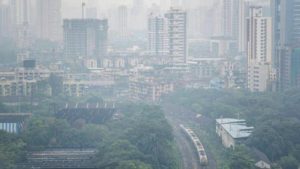
Mumbai has been ranked as the most-polluted city in India and second most polluted city globally within a week between January 29 and February 8, according to Swiss air tracking index IQAir, a real-time air quality monitor. On January 29, Mumbai was ranked 10th in the rankings for the poorest position. Mumbai then clinched the second spot on February 2 before falling in the following days. Then it again rose to take the second place on February 8. On February 13, Mumbai took over Delhi as the most polluted city in India and was the third most unhealthy city worldwide for air quality worldwide.
14. World’s 2nd slowest driving place to 5th largest CO2 emitter

According to a latest report by specialist in geolocation technologies TomTom, Bengaluru’s traffic has made it the second slowest place to drive through in the world in 2022. Traffic woes in the Silicon valley of India is not hidden from anyone. It would take any one on an average of half an hour to cover 10 km. The absolutely slowest city to drive in in the world is London, where people take 36 minutes and 20 seconds to go 10 kilometres – the longest time for a journey of that distance out of 389 cities in 56 countries surveyed in 2022. In the third and fourth positions are Dublin, Ireland, at 28 minutes and 30 seconds, and Sapporo, Japan, at 27 minutes and 40 seconds.
Awards News
15. Subhash Chandran awarded Kerala’s Akbar Kakkattil award for ‘Samudrasila’

Writer Subhash Chandran’s novel Samudrashila has been chosen for the Akbar Kakkattil Award instituted by a trust in the memory of the short story writer and novelist from Kozhikode. The novel was selected by a three-member jury from among the literary works published in the last five years. The award consisting of a purse of Rs 50,000 and a sculpture will be presented to Mr. Subhash Chandran by writer M. Mukundan at an event on February 17. M.K. Muneer, MLA, will deliver a commemorative lecture. This novel also won the M. Sukumaran Memorial Literary Award for the year 2021.
Schemes News
16. Ministry of Tourism Selected Four Pilgrim Centres Under PRASHAD Scheme
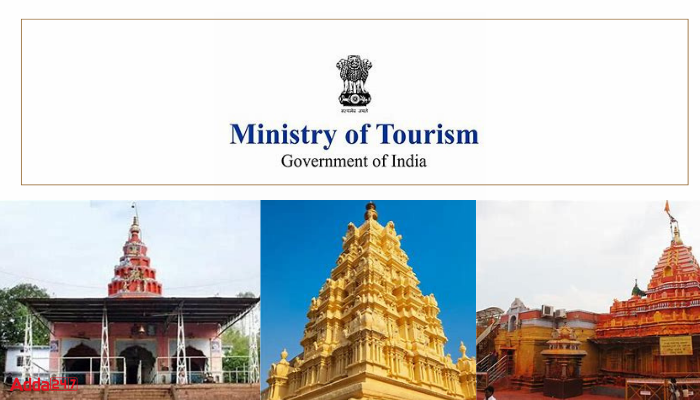
The Ministry of Tourism under its schemes of ‘Swadesh Darshan’ and ‘National Mission on Pilgrimage Rejuvenation and Spiritual, Heritage Augmentation Drive (PRASHAD)’ has identified four pilgrim centers for development. They provide financial assistance to State Governments/UT Administrations etc. for the development of tourism infrastructure in the country. The Ministry of Tourism has revamped its Swadesh Darshan scheme as Swadesh Darshan 2.0 (SD2.0) to develop sustainable and responsible tourism destinations. Under SD2.0, the Ministry has identified ‘Hampi’ and ‘Mysuru’ as destinations for development.
Miscellaneous News
17. Mansukh Mandaviya Inaugurated IFFCO Nano Urea Liquid Plants at Aonla and Phulpur
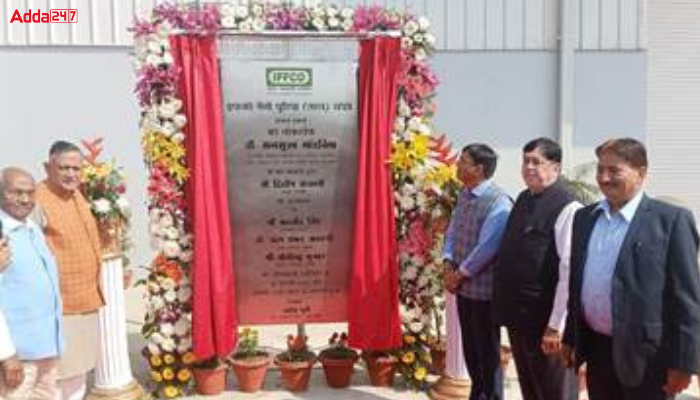
Union Minister of Chemicals and Fertilizers, Dr. Mansukh Mandaviya inaugurated the IFFCO Nano Urea Liquid Plants at Aonla and Phulpur in Uttar Pradesh. Dr. Mandaviya stated that it is an important day because Nano urea plants have been dedicated to the nation. He informed that Nano Urea, in the coming times will ensure the progress of the farmers and increase their income. The Union Minister highlighted the benefits of Nano urea stating that it is the best green technology and provides solutions to pollution. It saves the soil and also increases productivity and hence is the best for the farmers.





 Which Indian City is Known as the Footwe...
Which Indian City is Known as the Footwe...
 Which Desert is known as the Cold Desert...
Which Desert is known as the Cold Desert...
 Top-10 News Media Companies in the World...
Top-10 News Media Companies in the World...







